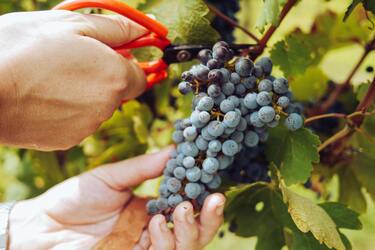How to prune grapes correctly: tips for a bountiful harvest

Proper summer pruning is essential for optimal fruiting and vine health. Without it, the grapes can become overloaded, resulting in small and tasteless berries.
Here are recommendations on how to prune grapes effectively during the summer months.
Benefits of summer pruning
Understanding the benefits of summer pruning is crucial before diving into the process. By allowing the vine to receive more light and air, pruning strengthens its immune system and reduces the risk of disease. In addition, it promotes an even distribution of juices in the plant.
Pruning during fruiting
Grape pruning should begin in June and continue until September, even during the fruiting period. The main goal is to ensure that the ripening clusters have sufficient access to light and air. This results in sweeter berries that ripen faster.
Basic rules for summer care
Before you start, get sharp garden shears, secateurs, or specialised grape saws. Make sure that the tools are well sharpened, as dull blades can damage the vine.
As soon as the first buds appear on the grapes, remove the three lower shoots, as well as any weak or diseased buds. These can be easily removed by hand.
During July, pinching is crucial. Stepsons are young green side shoots that grow from axillary buds. Cut them back to the bottom two leaves. Inspect the grapes regularly during this month and cut off any young stepsons that emerge.
Read also: When and how to plant grapes to get an incredible harvest: tips from summer residents
Pruning during fruiting
During the fruiting period, cut off the inflorescences. In the first year, leave no more than 10 of the strongest inflorescences on the entire vine. In the second year, limit yourself to 20, and in the third year - no more than 30. Remember that each fruit branch should have no more than two clusters.
In July and August, thin out the leaves to allow light to reach the berries. Remove leaves that cast a shadow on the clusters and continue to remove stepsons.
In August, pinch out vines that have reached a height of 2 metres or more. Shorten the unnecessary shoots by half, and cut the fruiting ones by about 30-40 centimetres.
Experienced gardeners often recommend treating the cut sites with garden varnish or a solution of copper sulfate to prevent infections and speed up wound healing.
As a reminder, UAportal has already written about how to grow tulips in egg trays.
If you want to get the latest news about the war and events in Ukraine, subscribe to our Telegram channel!
